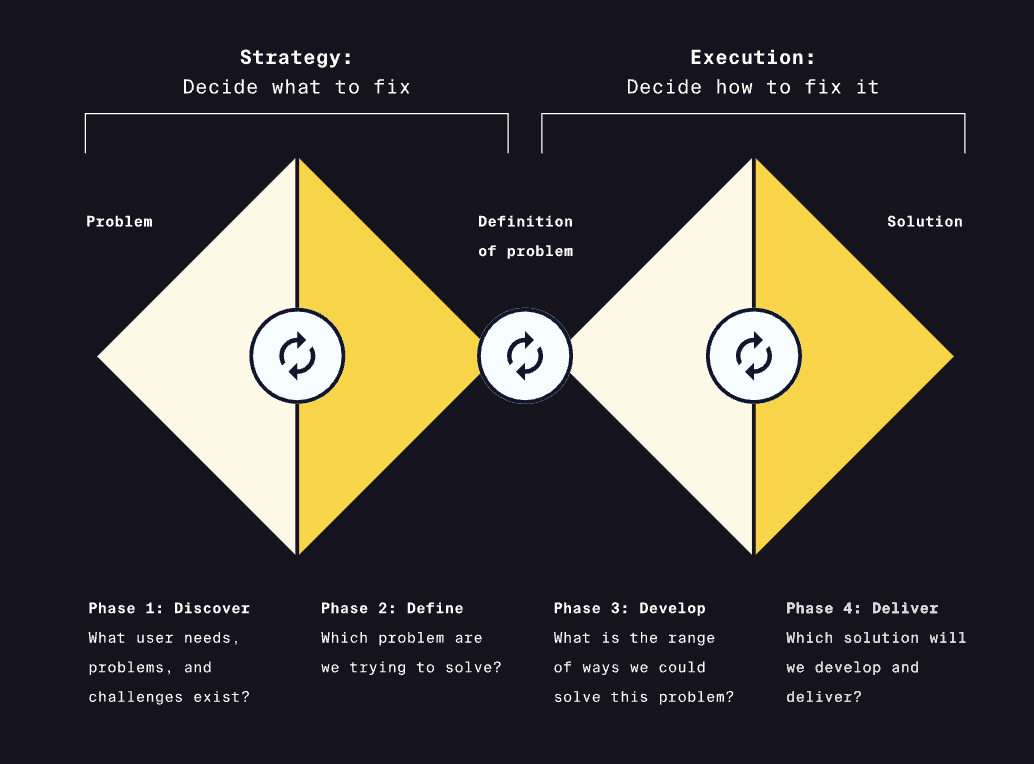- 双菱形结构说明了在设计过程的战略和执行阶段发生的两种思维模式
- 发散思维:探索了许多可能的解决方案并产生了新的想法。
- 收敛思维:分析、过滤和聚焦想法并导致决策。
- 双金刚石工艺的四个阶段如下:
- **Discover** (divergent strategy): Explore the problem and landscape, and learn from users and the market through user [interviews](https://www.codecademy.com/resources/docs/uiux/interviews), [surveys](https://www.codecademy.com/resources/docs/uiux/surveys), and other research.**发现**(发散策略):探索问题和格局,并通过用户[访谈](https://www.codecademy.com/resources/docs/uiux/interviews)、[调查](https://www.codecademy.com/resources/docs/uiux/surveys)和其他研究向用户和市场学习。
- **Define** (convergent strategy): Sort and analyze the information gathered during the discovery stage and hone in on the problem we’re trying to solve.**定义**(收敛策略):对发现阶段收集的信息进行排序和分析,并专注于我们要解决的问题。
- **Develop** (divergent execution): Generate a range of ideas for possible solutions through brainstorms, workshops, low fidelity prototypes, and other ideation methods. Test different ideas with users or within the company to see what resonates.**开发**(发散执行):通过头脑风暴、研讨会、低保真原型和其他构思方法,产生一系列可能解决方案的想法。与用户或公司内部测试不同的想法,看看哪些能引起共鸣。
- **Deliver** (convergent execution): Hone in on, develop, and deliver the solution. Continue evaluating and testing the developed design to ensure it meets user needs.**交付**(融合执行):专注、开发和交付解决方案。继续评估和测试开发的设计,以确保其满足用户需求。
- 